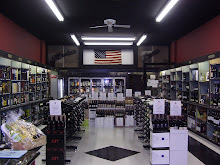Tuesday, January 11, 2011
Malbec Then and Now
It is impossible to open a wine publication or a blog without reading something about Malbec. In the past decade I have tasted my fair share of Malbec wines, but my first experience was with a Cahors and that is the one that sticks with me. This was not the wine that most people would think of as Malbec. It was not soft fruity and welcoming, but it was dark brooding and damn near angry with gripping tannins and a structure that taunted me to try and get through it. This was my first experience with a wine made from 100% Malbec and I loved it. This Malbec did soften and open up after a few, well 12, hours and was really beautiful. With the advances in wine making, the softer more approachable wine I had to wait 12 hours for, is now available right when you pull the cork or twist the cap. It was that wine that lead me to learn everything I could about first, the Cahors region, and later Argentina. The Malbec grape in many ways is a bit of a phoenix. Dating as far back as the 13th century, the wines of Cahors were widely held in great esteem with a small interruption in trade with England during the Hundred Years War. Cahors caught the attention of Thomas Jefferson who sang its praises as the "black wine of Cahors." Throughout the 18th and 19th centuries it remained popular until 1885 when almost 90% of the vineyards were destroyed by phylloxera. It rebounded more slowly then other regions that were also crushed by phylloxera such as Bordeaux. The region slowly came back but never reclaimed its former glory. Then in February of 1956, the region was once again decimated this time by frost. As Malbec's star was fading in France, it was being widely planted in Argentina. It was first brought to Argentina by Tiburcio Benegas, along with the most advanced technology available at the time in the late 1800's. Tiburcio Benegas, who was the governor of the Mendoza province, is considered one of the pioneers in the wine industry in the Americas. For the better part of the 19th and 20th centuries, Argentina mostly produced cheap wine for local consumption. It was not until the 1990's when the government stabilized and investment poured into the wine industry. It was in Argentina that Malbec really came into its own. They gained popularity very quickly outside of Argentina and were second behind Chile in exports. Then in 2002, the Peso was devalued and tourism boomed as did investment. What we now see in both the quantity and quality of Argentine wine is a direct result of those investments. Wine luminaries such as the Rothschild family, Paul Hobbs, Michel Rolland, and many others have all invested their time and money in the vineyards of Argentina. Imports of Malbec from Argentina have grown by 40% in just the past few years according to some experts . This is the state of Malbec right now, seeing astronomic popularity and continuing to grow. This is great heights for a once ignored humble grape.
Subscribe to:
Post Comments (Atom)


No comments:
Post a Comment